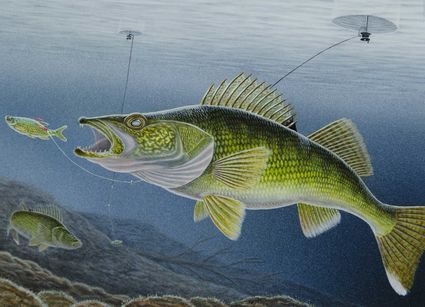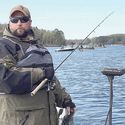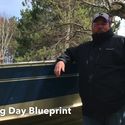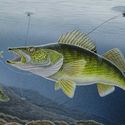Out in it: For openers, fish where the fish are
May 8, 2020
Video by Bret Baker and Legacy Angling
This week I've been able to get out and chase some pre-spawn crappies, brook trout, and sample the annual sucker run. Most of my focus is on the impending Minnesota walleye opener Saturday. The march of the boats has already begun through Cloquet, mostly headed north. I'm hoping most anglers are sticking close to home, but my gut tells me otherwise.
I have decided it's best to avoid crowded boat ramps and fish off the beaten path for the opener this year. My approach will follow a pattern that I've put together over the years, a blueprint for opener success.
I think there is a time and place to fish walleyes slowly, live-bait rigging, slip bobber fishing, or slowly hopping a jig and minnow across the bottom. Timing and location are key. Let's imagine it's the opener and you're excited as a kid on Christmas morning. You grab a handful of eighth-ounce jigs and a bucket of fathead minnows. Slowly paralleling the shoreline of your favorite lake, you pitch up into the shallows and painstakingly work your jig back to the boat, concentrating on every subtle motion you impart on your offering.
Over the course of the morning, you cast an entire shoreline with nothing to show for your efforts. Your excitement wanes, the walleyes are not cooperating, you suspect the water must be too cold.
Let me ask a question that most fishermen cringe to think about. What if there was not a single walleye in the entire stretch to catch in the first place? It's a simple concept, but many of us skip this step. We must fish where the fish are, and adjust our presentations and mindsets accordingly.
For me, finding fish on any body of water is job No. 1. I accomplish this by covering water, fishing fast, and paying close attention to what my graph is telling me.
My preferred method for finding fish is trolling crankbaits, yes, even on the opener. It allows me to target productive water, and, just as importantly, eliminate unproductive stretches of shoreline.
Let's go back to the scenario above. You and I are working the same shoreline. You're an hour in and a couple of hundred yards from where you've started. I zip by at two miles an hour, using my graph and crankbait to gather information. I don't catch anything, and I don't see you hook anything either. You carry on, and I'm around the corner and gone. As I round the point I see another boat land a walleye, or I latch onto one myself. Now we're talking. The most important part of the puzzle is starting to come together.
Then and only then will I begin to slow my roll. I have access to a spectrum of aggressive approaches in my arsenal. After trolling, the next fastest way for me to cover water and contact active fish is to pitch jigs. Tiny jigs and live bait handcuff me, forcing me to fish too slow. Putting a minnow on an eighth-ounce jighead makes it impossible to fish quickly. A heavier jighead tipped with a plastic trailer can be fished much more aggressively. It can also be launched a country mile without the worry of casting off any live-bait.
Trolling, followed by casting heavy jigs, allows me to hone in on where the fish are located, and what they are willing to chase. If I'm working a location and I'm marking a lot of fish, but not connecting, it's time to slow down one more notch.
Now there are two options for consideration. One, now is the time, knowing walleyes are around, to downsize and pitch smaller jigs with a lively minnow. Another option is a proverbial Minnesota favorite, backtrolling and slowly working a Lindy rig.
My preference is to pitch jigs when emerging weeds are scattered on an expansive flat, and Lindy rig if I'm pulling into and backing out of windblown pockets of shoreline.
Finally, once in a while magic happens and all the pieces of the puzzle come together. Using your graph, and actively covering water, you locate the mother lode of walleyes holding tight to a piece of structure. The tendency is to try to fish these bunched up fish aggressively but, in reality, you don't want to blow these fish out of their shallow feeding location.

Painting by Josh Evan of Mapleton
The Minnesota Department of Natural Resources walleye stamps uses a painting by Josh Evan of Mapleton.
Now that your puzzle is solved, it's time to back off, anchor, and tone down your presentation to the most subtle of all, the slip-bobber. Using the wind in your favor, cast just above your target, allowing your presentation to naturally float with the wind and waves into the strike zone. This is when a good day on the water can turn great.
The fish will cooperate for a while but, inevitably, they will move on or shut down. At this point, for me, the process resets. Time to get behind the big tiller and cover some water with cranks. The last thing you will catch me doing on the opener is pitching tiny jigs to empty water.
Bret Baker is an award-winning outdoors columnist and lifetime resident of Cloquet. He is a proud husband, father, educator and outdoorsman. Email him at [email protected] with fishing questions or story ideas.
*******
Outdoors online
Bret Baker goes through the strategy and tools behind his walleye opener plans on YouTube at youtu.be/BAZ9zrtLAKI











